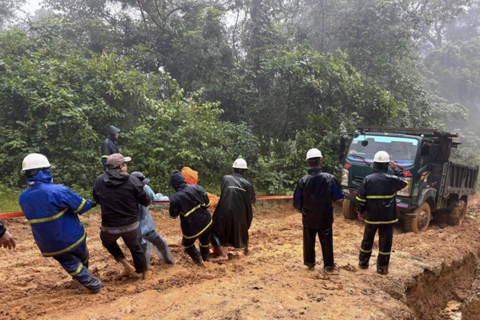US intensifies healthcare cooperation with Vietnam
Vietnam’s healthcare sector likely climbs to US$23 billion in 2022 at a compound annual growth rate (CAGR) of 10.7%.
A delegation of 10 US companies has concluded an important engagement with Vietnam’s Ministry of Health to advance bilateral cooperation in the healthcare sector.
| Delegation led by US Assistant Secretary of Commerce for Global Markets and Director General of the US and Foreign Commercial Service Arun Venkataraman works with Nguyen Minh Hang, Assistant to Minister of Foreign Affairs in Hanoi on Sept 23. Photo: US Embassy in Hanoi |
The delegation of companies in healthcare, digital technologies, and related products and services sectors led by US Assistant Secretary of Commerce for Global Markets and Director General of the US and Foreign Commercial Service Arun Venkataraman last weekend had the opportunity to explore business connections and establish relationships with public and private sector leaders in Vietnam.
In Hanoi, the delegation worked with Vietnam’s Ministry of Health (MOH), Ministry of Industry and Trade (MoIT), Ministry of Foreign Affairs (MOFA), and Ministry of Information and Communication (MIC). Assistant Secretary Venkataraman also held engagements with the Communist Party of Vietnam’s Central Economic Commission, the American Chamber of Commerce in Hanoi (AmCham Vietnam), and the US-ASEAN Business Council (USABC).
The visit to Vietnam is part of Assistant Secretary Venkataraman’s week-long US healthcare trade mission to Southeast Asia. Prior to Vietnam, he visited Thailand and Malaysia and made an official visit to Singapore for three days.
“We learned firsthand this week about the significant healthcare needs in Southeast Asia and the strong commitment of governments in the region to meet those needs,” said Venkataraman. “We are proud that the US healthcare solutions we brought on this mission—from medical tech to digital products, to lifesaving pharmaceuticals—can play a critical role in helping governments improve their healthcare systems.”
He noted that the US is committed to working with these three countries and others across Southeast Asia to build economies that meet the 21st century needs of the citizens.
Healthcare, digital commerce, energy, and climate change are areas of priority by American investors in Vietnam, the idea was shared at the US-Vietnam Business Summit 2022.
Vietnam’s healthcare landscape
Vietnam’s healthcare sector is potential due to demographic and socioeconomic changes. Obviously, its quick economic development has increased the demand for higher-quality healthcare services, particularly among the expanding middle class. In addition, the expansion of health insurance and hospital system has contributed to the prospects.
A way to guarantee improved health services for locals is through social health insurance, which serves as the primary public funding source for healthcare in Vietnam. By the end of 2021, 91% of the population has this type of insurance, and the government is still working to make healthcare universal for both locals and expats in the future.
Medical equipment is also in high demand, especially devices for surgery and intensive care units (ICU) from advanced markets like the EU and the US. The EVFTA and other trade agreements are predicted to fuel trading prospects. The implementation of the EVFTA is expected to have a number of positive effects, including improvements in regulatory standards, information sharing regarding customs needs, and the simplification of customs procedures.
Vietnam’s healthcare industry is forecast to grow thanks to the increasing demand for healthcare services. In 2019, the country’s healthcare spending reached nearly US$17 billion, equivalent to 6.6% of its GDP, according to Fitch Solutions. The figure likely climbs to $23 billion in 2022 at a compound annual growth rate (CAGR) of 10.7%.
The EU–Vietnam Free Trade Agreement (EVFTA) and the revised Law on Investment will be advantageous to international producers and suppliers seeking to penetrate the Vietnamese market, which continues to be heavily dependent on imported medical supplies and medications.
The US–Vietnam cooperation in the healthcare sector dated back to the early 1950s. In July 1950, a CDC team of experts in malaria control traveled from Atlanta to Hanoi to share information and experiences with their Vietnamese counterparts, according to Eric Dziuban, Country Director of the US Centers for Disease Control and Prevention (CDC) Vietnam.
“When we think back to the CDC scientists who traveled to Hanoi in the summer of 1950, and we look at the future of Vietnam - US health cooperation, we feel nothing but optimism,” Dziuban shared with The Hanoi Times.











